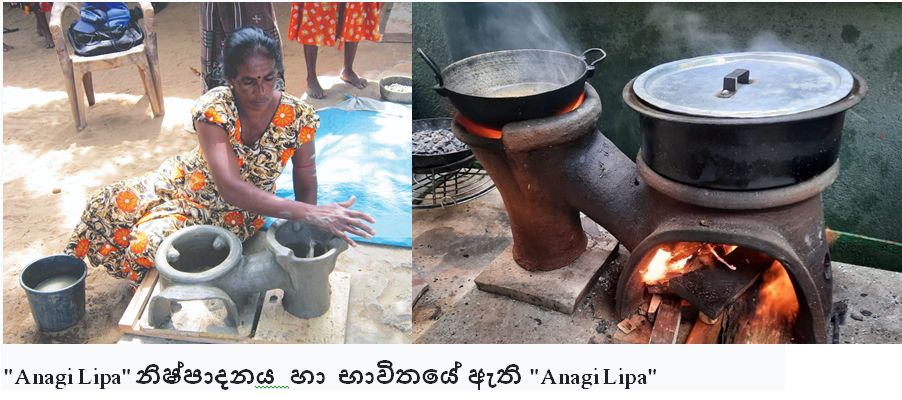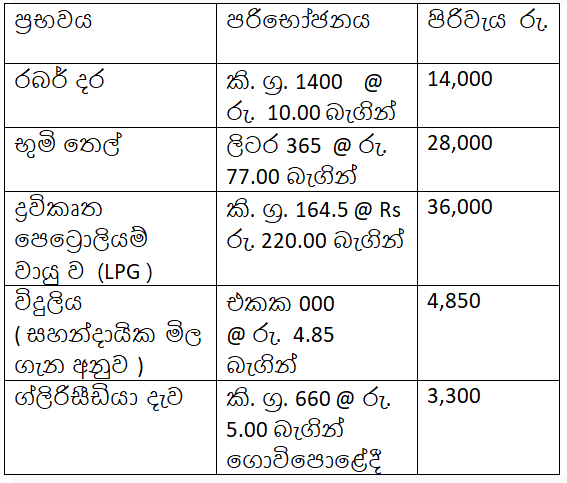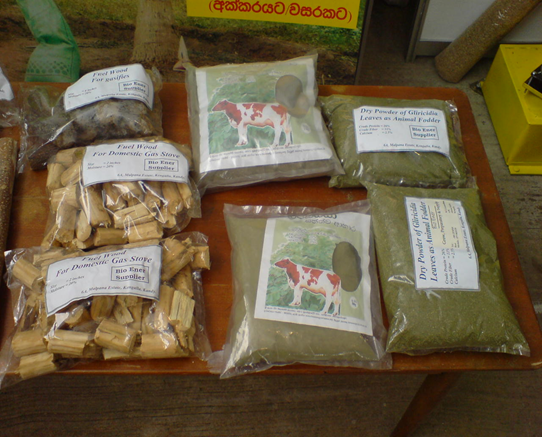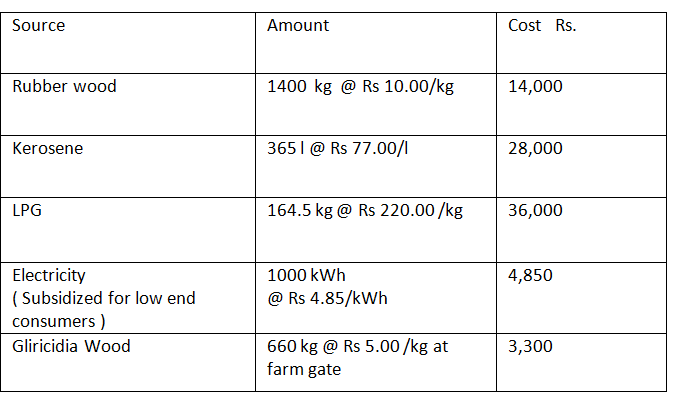බලශක්ති අර්බුදය කුස්සියටත් අත පොවයි
ඉංජිනේරු පරාක්රම ජයසිංහ විසිනි
මෑතකදී දියර පෙට්රෝලියම් වායුවේ (LPG) මිල අධික ලෙස ඉහළ දැමීම හේතුවෙන් පාරිභෝගිකයින්ගේ මුදල් පසුම්බියට බරපතල හානියක් සිදු වූ අතර, මේ මිල අධික ගෑස් භාවිතයේ වුවද ආරක්ෂාව පිළිබඳ නව අර්බුදයක් නිර්මාණය කර ඇත.
2021 අගෝස්තු මස තරම් මෑතක දී මා විසින් The Island පුවත් පතෙහි “ෆොසිල ඉන්ධන මඩ ගොහොරුවේ එරුණ ශ්රී ලංකාව”( “Wallowing in the Fossil Fuel Trap” ) යන මාතෘකාව යටතේ ලිපියක් ප්රකාශයට පත් කළෙමි. එහිදී මම සමස්ත බලශක්තියට මෙම අවාසනාවන්ත දීන භාවය නිසා වන හානිදායක විශාල චිත්රය ආමන්ත්රණය කළෙමි.
ආනයනික ෆොසිල ඉන්ධන මත යැපීම නිසා විදුලිය සහ ප්රවාහන ඉන්ධන වැනි ක්ෂේත්ර කෙරෙහි ඇති වන බලපෑම බලධාරීන් විසින් ඉහළ සහනාධාර මගින් වසන් කරන බැවින්, එමඟින් පාරිභෝගිකයන් ව්යාජ ප්රීතියෙන් පසුවන අතර, ඔවුන්ගේ අවශ්යතාගැන බලධාරීන් සංවේදී බව විශ්වාස කරමින් , මෝඩයන්ගේ පාරාදීසයක ජීවත් වෙති.
උදාහරණයක් වශයෙන්, ඇතැම් වසරවල රුපියල් බිලියන සියයකට ආසන්න වන විදුලිබල මණ්ඩලයේ අඛණ්ඩ පාඩු පියවා ගැනීම සඳහා, අවම පරිභෝජන මට්ටම්වල සිටින පාරිභෝගිකයින් පවා ඒකකයකට රු. 5.00 හෝ ඊට වැඩි අමතර ගාස්තුවක් ගෙවති. එය මාසික බිල්පතෙහි පිළිබිඹු නොවේ. සමහර විට LPG සපයන්නන්ගෙන් එක් අයෙකු පුද්ගලික සමාගමක් වීම නිසා, වර්තමාන LPG මිල ගණන්වලට සහනාධාර ඇතුළත් නොවිය හැක. ඒ වෙනුවට භාවිතයේ ආරක්ෂාව පිළිබඳ සැකයක් පවතින විට පාරිභෝගිකයන් දැන් සිටින්නේ නරකම තත්ත්වයකය. නමුත් වර්තමානයේ මතුවී ඇති ජිවිත ආරක්ෂාව පිළිබඳ ප්රශ්නය කාපට් යටට අතුගා දැමිය නොහැක.
කෙසේ වෙතත්, ඉතා මූලික ප්රශ්නය වන්නේ අප මෙම දුක්ඛිත තත්වයට අපගේම රජයන් විසින් කොන් කළේ මන්ද යන්නයි. මෙයට මුලුමනින්ම හේතු වී ඇත්තේ නිසි බලධාරීන්ගේ නොහැකියාව, අනුවනකම හා දුරදක්නා නුවණක් නොමැතිකම සහ අනුප්රාප්තික රජයන්ගේ අදූරදර්ශී ප්රතිපත්ති සහ තීරණ ගැනීමයි. ශ්රී ලංකාව වැටිය හැකි අතිශය තීරණාත්මක තත්ත්වය පිළිබඳව මොහොතක ආවර්ජනයකින් වුවද , මෙම කඩාවැටීම තව දුරටත් අන්ධ ලෙස පවත්වාගෙන නොයාමට ප්රමාණවත් විය යුතුව තිබුණි. ඇත්ත වශයෙන්ම මෙම සනාතන පසු ගාමී ක්රියාවලිය හා අනිසි පල පසුගිය දශක කිහිපය තුළ නැවත නැවතත් ඔප්පු වී ඇතිමුත් එයින් උගත් පාඩම් කිසිවක් දැකිය නොහැකිය .
වත්මන් LPG ප්රශ්නය කෙරෙහි දැඩි අවධානයක් යොමු කරමු. ආහාර පිසීමේ ඉන්ධනයක් ලෙස LPG ආගමනය 1970 දශකය දක්වා දිව යයි. ඒ අපගේම පිරිපහදුවෙන් LPG කිසිදු ඵලදායි භාවිතයකින් තොරව දවා දමනලද අවධියේය .
එම වායු නිශ්කාෂන ධාරිතා මට්ටමට සහ භාවිතයට සීමා වූ මෙම තීරණයට විරුද්ධ විය නොහැක. වරද ඇත්තේ අපගේ පිරිපහදුවෙන් කළ හැකි දේශීය නිෂ්පාදනයෙන් විශාල ලෙස ඔබ්බට ගිය LPG භාවිතය පුළුල් කිරීම සහ ප්රවර්ධනය කිරීම සහ එම ඉල්ලුම සැපයීමට අපට කිසිසේත්ම පාලනයක් නොමැති ආනයනයන් වෙත යොමුවීමයි.
මෙය ජාත්යන්තර පෙට්රෝලියම් දැවැන්තයෙකු වන Shell කොම්පැනියට පවා සම්බන්ධ වීමට මග විවර කරන ආකර්ශනීය වාණිජ අවස්ථාවක් වන්නට ඇත. පසුකාලීනව උද්ගත වූ පසුබිම හා සිදුවීම් ගැන යොමු නොවෙමි. හුදෙක් ගෘහස්ත ඉන්ධනයක් සැපයීම ඉක්මවා, බොහෝ අංශ මත ඇති විය හැකි අනාගත හා අනිසි බලපෑම් පිළිබඳ පූර්ණ දැක්මක් හෝ සැලකිල්ලක් නොමැති වීමත් සමඟ තව තවත් ආනයනයක් අන්ධ ලෙස ප්රවර්ධනය කරන ලද බවනම් සත්යයකි. විදේශ විනිමය හිඟය පිළිබඳ අපේ ප්රශ්න අද තරම් තීරණාත්මක නොවුණත් ඒ දවස්වලත් එය ශ්රී ලංකාවේ සලකියුතු මට්ටමක ගැටලුවක්ව පැවතිනි.
එවිට LPG කිලෝග්රෑම් 13.5 සිලින්ඩරයක මුල් මිල රුපියල් 35.00ක් වූ අතර දැන් රුපියල් 2850.00 දක්වා ඉහළ ගොස් ඇති අතර එය 88 ගුණයකින් වැඩි වීමකි. මෙම දත්තය හුවා නොදැක්වීම ජනතාව අඳුරේ තබාගැනීම පිණිස භාවිත තවත් ක්රමයක්දෝයයි හැඟෙයි.
ශ්රී ලාංකික පාරිභෝගිකයන්ගේ හැසිරීම් සහ ආකල්ප අනුව, මිල ඉහළ යන සෑම අවස්ථාවකම උද්ගෝෂණ රැලි, විරෝධතා පල කිරීම සහ බොහෝ ඉහළ මට්ටමේ සාකච්ඡා සහ ප්රවෘත්ති වාර්තා ඇති වන අතර, එය සති කිහිපයකින් අමතක වී යයි . මීළඟට උද්ගත වන අර්බුදය කෙරෙහි පොදු මාධ්ය ඔවුන්ගේ අවධානය වෙනතකට යොමු කරන අතර විරෝධතාකරුවන්ට ඔවුන්ගේ ප්රේක්ෂකයන් සහ බලධාරීන්ගේ අවධානය අහිමි වී යාමත් සමග සියලු උද්ගෝෂන වියැකි යයි. මෙම සත්යතාව මීළඟ මිල ඉහළ යාම ඉදිරිපත් කිරීමට රජයට ඉඩ සලසන අතර , ඒ අතරතුර ඉඳහිට කරන මෝඩ මිල අඩු කිරීම් සමඟ LPG මිල අඛණ්ඩව ඉහළ ගොස් ඇත්තේ එලෙසිනි.
LPG හි වත්මන් අර්බුදය කෙරෙහි පමණක් අවධානය යොමු කරමින්, අපගේ විකල්පය කුමක්දැයි විමසමු?
පසුගිය 2002 වසරේ දී පමණ, එවැනි අවස්ථාවක මිල ඉහළ යාමත් සමඟ NERD මධ්යස්ථානය ජනතාව නැවත ඉන්ධන දර භාවිතයට පොළඹවා ගැනීම සඳහා සුදුසු දර භාවිතයෙන් පිසින උදුනක් සංවර්ධනය කිරීමේ පර්යේෂණ ව්යාපෘතියක් ආරම්භ කළේය. සාර්ථක මාදිලි කිහිපයක් සංවර්ධනය කරන ලද අතර වෙළඳපල සඳහා ඒකක නිෂ්පාදනය කිරීමට සමාගම් ගණනාවකට බලපත්ර නිකුත් කරන ලදී. බොහෝ වෙළඳසැල් වල එම ලිප සාධාරණ මිලට එවකට ප්රදර්ශනයට තිබීම සතුටට කරුණකි. පහත පින්තූර මෙම ආකෘති නිරූපණය කරයි.


කෙසේ වෙතත්, කනගාටුදායක ලෙස ශ්රී ලංකාවේ නිරතුරු සිදු වන පරිදි, මෙම උත්සාහය ද මූලික වශයෙන් පහත දැක්වෙන කරුණු නිසා අසාර්ථක විය.
• ලිප භාවිතා කිරීමෙන් වැඩි ප්රයෝජනයක් ලබා ගත හැකිව තිබූ, විශේෂයෙන්ම නාගරික ප්රදේශවලට එම උදුන් භාවිතයට අවශ්ය ඉන්ධන දැව සඳහා සුදුසු සැපයුම් යාන්ත්රණයක් සංවර්ධනය කර නොතිබීම.
• ගම්බද ප්රදේශවල පවා LPG ආක්රමණශීලී ලෙස අලෙවි කිරීම. අවශ්ය සියලුම දැව සැපයුම තම ගෙවතෙන්ම ලබාගත හැකි ගෘහනියන්ද මෙම උගුලට හසුවිය. පර්චස් 10 ක ඉඩමක වුවද වැටක සිටුවා ඇති ග්ලිරිසීඩියා පේළි දෙකකින් පවුලක වසරක ඉන්ධන දැව අවශ්යතා අඛණ්ඩව ජනනය කළ හැකි බව අප විසින් ගණනය කර ඇත .
මීට සමගාමිව පුළුල් ලෙස උපුටා දක්වන ලද ශාස්ත්රීය න්යායන් සහ ප්රකාශන සමඟ ඉවුම් පිහුම් සඳහා ජෛව ස්කන්ධ භාවිතය වළක්වාලීමේ සාමූහික ප්රයත්නයන් ද පසුබිමෙහි විය. ජෛව ස්කන්ධ භාවිතයෙන් දුම සහ නොදැවුණු දර ආදිය නිසා සෞඛ්ය උවදුරු ඇති විය හැකි බව යනාදීවල පණිවිඩය වූයේ ශ්රී ලංකාවේ අප අනාදිමත් කාලයක සිට ඉවුම් පිහුම් කටයුතු සඳහා ගින්දර සහ වෙනත් ජෛව ස්කන්ධ භාවිත කර තිබීමත් එවැනි අනතුරක් පිළිබඳ කිසිදු විධිමත් සාක්ෂියක්ද නොමැතිවය. දුර්වල වාතාශ්රය සහිත සීමා සහිත ස්ථානවල ආහාර පිසීම සිදු කරන සමහර රටවලට මෙම සෞඛය අනතුරු හා ගැටලු සත්ය විය හැක. නමුත් අපගේ සාම්ප්රදායික මුළුතැන්ගෙය සමස්තයක් ලෙස එසේ නොවේ. ඒවායින් බොහොමයක මුළුතැන්ගෙයෙහි කොටසක් ලෙස චිමිනියක් ඇත. පසුගිය දශක කිහිපය තුල රජයන් විසින් අඩු ආදායම් පිරිස් සඳහා දියත් කරන ලද නිවාස ව්යාපෘති මගින් ගොඩ නගන ලද නිවාස සදහාද එවැනි චිමිනියක් දක්නට ලැබේ. එබැවින් අතිත දත්තයන් මත ඉතා දිළිඳු නිවෙස්තුල තන්වයන් හුවා දක්වමින් පිසුම් කටයුතු සදහා දර භාවිතය අධෛර්යමත් කිරීමට කරන ප්රයත්න හෙලා දැකිය යුතුය. විකල්පයක් ලෙස ඔවුන් ඉදිරිපත් කරන්නේ කුමක්ද?ඉතා අධික මිලට LPG මිලදී ගැනීමද? යතාර්තය දැන් පැහැදිලිව පෙනේ. එහෙත් සාම්ප්රදායික ආකාරයෙන් දර භාවිතය නවීන උස් මහල් නිවාසවල ගැටළුකාරී විය හැකිය.
LPG වෙළෙන්දන් මේ හිඩැස පිරවීමට වහාම ඉදිරිපත් වූ අතර සමහර විදේශීය ආයතන විසින් LPG කුකර් පවා නොමිලේ ලබාදීමට පොරොන්දුවූ මහජන සම්මන්ත්රණයක් මට මතකය. එවිටත් ඉහළ යන මිල ප්රවණතාවයක පවතින ගෑස් සඳහා ගෙවන්නේ කවුද යන මගේ ප්රශ්නයට ඔවුන් පිළිතුරු නොදුනි. මෙය නොමිලේ සිගරට් පිරිනැමීම හෝ පාසල් දරුවන්ට මත්ද්රව්ය මිශ්ර රසකැවිලි පිරිනැමීමේ අවාසනාවන්ත සිදුවීම්වලට වඩා වෙනස්ද?
වර්තමාන සන්දර්භය තුළ අපට ලබා ගත හැකි විකල්ප මොනවාද සහ ඒවා කෙතරම් වේගයෙන් අනුගමනය කළ හැකිද? මම මේවා දෙස බලන්නේ පාරිභෝගිකයා අපේක්ෂා කරන සහ ගෙවීමට කැමති දැරිය හැකි මිල සහ නවීනත්වයේ තරමටයි. ඉහළ ස්තරයේ සිට මේවා ලැයිස්තුගත කළ හැකිය
1. පිසුම් කටයුතු සදහාද විදුලිය භාවිතයට යොමුවන්න - මෙම යෝජනාවට විරෝධතා හා කෑගැසීම් ඇති වීමට පෙර, මෙම විකල්පය යෝජනා කර ඇත්තේ, දැනටමත් ප්රමාණවත් ධාරිතාවයකින් යුත් වහලයේ මත සූර්ය බල (PV) පද්ධති ඇති අය සඳහා බව පැවසීමට මට ඉඩ දෙන්න. ඒ නිසා ජාතික විදුලිබල පද්ධතියට අමතර බරක් පැටවෙන්නේ නැතිවාක් මෙන්ම පාරිභෝගිකයාට විදුලියෙන් ආහාර පිසීමේ සියලු ප්රතිලාභ භුක්ති විඳින අතර මූල්යමය අපහසුතාවයක් දැනෙන්නේද නැත. සූර්ය බල සංග්රාමයට සම්බන්ධ වීමට අපේක්ෂා කරන අයටද ස්ථාපනය කිරීමට නියමිත පද්ධතිවල ධාරිතාවය තක්සේරු කිරීමේදී මෙය සැලකිල්ලට ගැනීම ඉතා සුදුසුය.
2. දර උදුනෙහි NERD සැලසුම, විශේෂයෙන්ම විදුලි පංකාව සහිත ආකෘතිය සතුටුදායක සහ විශ්වාසනීය ලෙස ක්රියා කරයි. කෙසේ වෙතත්, වෙළඳපොලේ ඒවා දැනට නොමැති තරම්ය, සමහර බලපත්රලාභීන් නැවත නිෂ්පාදනය ආරම්භ කර ඇති බව මට වැටහේ. එසේම නිසි පරිදි වියළන ලද සහ සැකසූ ඉන්ධන දැව විශ්වසනීය සහ තිරසාර සැපයුමක් පිළිබඳ කලින් ඇති වූ ගැටලුව උදුන නිෂ්පාදනය වේගවත් කිරීම සඳහා කඩිනම් ක්රියාමාර්ග සමඟම විසඳිය යුතුය. ඉල්ලුමේ වේගවත් ප්රසාරණය සමඟ තවත් ව්යවසායකයන්ට යන්ට නිෂ්පාදනයට සම්බන්ධ විය හැකිය. මෙම උදුන් නාගරික තට්ටු නිවාස තුල උවද පහ
ුවෙන් භාවිත කල හැකිය.
3. විශේෂයෙන්ම බලධාරීන් සහ LPG වෙළෙන්දන් විසින් නොමඟ යවන ලද ගම්බද හා අර්ධ නාගරීක ප්රදේශවල නිවාස සඳහා වඩාත් පහසු සහ ක්ෂණිකව ලබා ගත හැකි විකල්පය නම්, පහත දැක්වෙන "Anagi Lipa' නම් වඩාත් වැඩිදියුණු කරන ලද ආවරණය කරන ලද මැටි ලිප් භාවිතා කිරීමයි. එය කොළඹ නගරයේ පවා රුපියල් 600.00 ක මිලකට ලබා ගත හැකි අපූරු සරල නව නිපැයුමක් වන මෙයට සම්ප්රදායික ගල් තුනේ ලිපෙහි කාර්යක්ෂමතාව මෙන් තුන් ගුණයකට වඩා වැඩි කාර්යක්ෂමතාවයක් ඇති අතර එමඟින් ඉන්ධන දැව පරිභෝජනය බෙහෙවින් අඩු වේ.

පහත වගුවේ දැක්වෙන්නේ විවිධ ඉන්ධන විකල්පවල සාපේක්ෂ පිරිවැයයි. විදුලිය විකල්පය පෙන්වන්නේ සැසඳීම සඳහා පමණි, එය වහලයේ මත සූර්ය බල PV පද්ධතියක් ලබා ගත හැකි අයට ශුන්ය පිරිවැයක් වේ.
හතර දෙනෙකුගෙන් යුත් පවුලක් සඳහා සංසන්දනාත්මක වාර්ෂික ඉන්ධන පිරිවැය

ඉන්ධන දැව ස්ථාවර සැපයුමක් සහතික කිරීමේ ක්රමවේධය පිළිබඳ ප්රශ්නය තව දුරටත් පවතී. සාමාන්යයෙන් ඕනෑම ගැටලුවකට සාර්ථක දේශීය විසඳුමක් ශ්රී ලංකාව සතුව ඇත. ඒවා අගය කිරීමට සහ සම්මත කිරීමට අප සූදානම් නම් පමණි. මෙම අවස්ථාවේ දී අප සතු විශ්මිත ශාකය ග්ලිරිසිඩියා, (වැට මාර, නාන්චි, ලාඩප්පා) ( Gliricidia Sepium) පැහැදිලි විසඳුම ලෙස ඉදිරිපත් වේ. අමාත්ය මණ්ඩලය ග්ලිරිසිඩියා (Gliricidia) සිව්වන ජාතික වැවිලි බෝගය ලෙස 2005 ජූනි තරම් ඈත කාලයකදී ප්රකාශයට පත් කළ අතර, මෙම වටිනා සම්පත සංවර්ධනය කිරීම සඳහා එහි ඇති සියලුම යෝජනා වහා නොසලකා හැරියේය. අඩුම තරමින් දැන්වත් ඔවුන් අවදි වී දැනටත් වලංගු එම යෝජනා සම්බන්ධයෙන් ක්රියාමාර්ග ගනු ඇතැයි බලාපොරොත්තු වෙමු.
එපමනක් නොව, මෙම විකල්පය භාවිතය දිළිඳු කාන්තාවන් මුහුණ දෙන, විශේෂයෙන්ම ග්රාමීය ප්රදේශවල, ක්ෂුද්ර මූල්ය සමාගම්වලට සහ ගිනි පොලි කරුවන්ට ණයගැති වීම සමහර කාන්තාවන් මුහුණ දෙන වඩාත් දින පතා උග්රවන ගැටලුව විසඳීමට අතීශය සාධනීය අමතර ඉපයුම් ක්රමයක් සපයයි. ඔවුන්ගේම ඉයුම් පියුම් සදහා ප්රයෝජනයට මෙන්ම දැන් ජීවිතයට බියෙන් LPG භාවිතා කිරීමට නොහැකිව සිටින වඩාත් ධනවත් ගෘහණියන් හට විකිණීමටද ඔවුන්ගේම ග්ලිරිසීඩියා ගස් භාවිතා කරමින් අත්යවශ්ය ඉන්ධන දර සපයන්නන් බවට එවැනි දුෂ්කරතාවන්ට පත් ගැමි කතුන්, කරමු.
වාසනාවකට මෙන් බොහෝ ග්රාමීය පවුල්වලට අවම වශයෙන් අක්කර කාලක භූමි ප්රමාණයක් ඇති අතර එහි ප්රමාණවත් ග්ලිරිසීඩියා ගස් ප්රමාණයක් වගා කළ හැකි අතර, එමඟින් පත්ර නිර්මාණශීලී ලෙස විවිද භාවිත සදහා සැකසුම් කිරීමෙන් ලැබෙන ආදායමට අමතරව, අතිරික්ත දැව ඉහත සඳහන් වෙළද පොලට විකිණීමට හැකිය. මේ අනුව ජාතික ගැටලුවක් විසඳීමේදී පහසු ක්රමයක් ලෙස ස්ථාවර මුදල් ආදායමක් සහතික කළ හැකිය. ග්ලිරිසීඩියා වගාවට කිසිම වියදමක් නැති අතර අවශ්ය එකම ආයෝජනය වන්නේ තියුණු පිහියක් මිලදී ගැනීමයි. නිසි සේ කපන ලද සහ වියලන ලද දැව ඔවුන්ගේ විවේක කාලය තුළ කිලෝ ග්රෑම් 3 පැකට් ලෙස වෙළඳපොළට සූදානම් කළ හැකිය. කෙසේ වෙතත්, ඉතිරි අගය දාමය සඳහා මෙම වෙළඳපොළ ප්රවර්ධනයට සහාය වන පද්ධති මතු විය යුතුය.
මෙම අවලෝකනයේදී අවධානයට ලක්විය යුතු ගණන් මිනුම් සලකා බැලීම වටී. ශ්රී ලංකාව පසුගිය වසරේ ඩොලර් මිලියන 200ක LPG ආනයනය කර ඇත, මෙම අවශ්යතාවයෙන් 25%ක් ආදේශනය ලෙස ග්ලිරිසීඩියා ඉන්ධන සැපයීම සඳහා යොමු කළ හැකි නම් වසරකට රුපියල් මිලියන 10,000 ක දැවැන්ත මුදලක් ග්රාමීය ආර්ථිකයට ගලා එයි.
පහසුවෙන් අලෙවි කළ හැකි ග්ලිරිසීඩියා දැව සහ පත්ර නිෂ්පාදන

එබැවින් ඓතිහාසිකව මේ දක්වා කිසිම ගැටලුවක් සදහා සාධනිය හා තිරසාර විසඳුමක ලබාදීමට නොහැකිවූ හා ජනතාව නිතිපතා අසහනයට පත්කළ සෑම තරාතිරමකම බලධාරීන් මත සදාකාලිකවම යැපීම වෙනුවට ඔවුන්ගේම විසදුම් වෙත යොමුවීම පාරිභෝගිකයින්ටම සුදුසුම විකල්පයයි . ඉන්ධන දැව සැපයුම්කරුවන්ට සාර්ථකත්වයට අවශ්ය වන්නේ එම මගට එලබීමට ඇති ඔවුන්ගේ කැමැත්ත පමණි.
එහෙත් මේ දක්වා පැහැදිලිවම ජාතියේ අවශ්යතා හා උන්නතිය සඳහා නොවන ප්රතිපත්ති සහ වැඩසටහන් මෙතෙක් අනුගමනය කළ ප්රතිපත්ති සම්පාදකයින්ගේ සහ නිලධාරීන් දැන්වත් අවදී වී ජාතිය ගොඩනැගිය හැකි ක්රම සහ විධි සම්පාදනය කිරීමේ වගකීම බාරගත යුතුය. අවශ්ය වුවත් නැතත් ආනයන මත යැපීමේ වැඩි වීමේ ප්රවණතාවයෙන් ඔවුන් අවදි වී ඉවත් විය යුතු කාලය මෙයයි. පාරිභෝගිකයන් අවදියෙන් සිටිය යුතු අතර කලබල වී විරෝධතා සහ උද්ගෝශනය කල යුත්තේ වගකිව යුතු කවුරුන් හෝ එවැනි අයථා ප්රයත්නයන් දරන විට පමණි.
The Energy Crisis hits the Kitchen
Eng. Parakrama Jayasinghe
On the heels of the grave hit on the wallet of consumers due to the hefty hike in the LPG prices, a new crisis by way of safety of use of even the expensive gas has created an even greater problem. As recently as August 2021 I published an article titles “ Wallowing in the Fossil Fuel Trap” in The Island where I addressed the larger picture on the entire spectrum of energy,
While the impact on areas like electricity and transport fuels by this over dependence on imported fossil fuels are kept under wraps by the authorities by high levels of subsidies, which keep the consumers in a state of false euphoria and leading them to believe that their interests are looked after and thus live in a fool’s paradise. But the present safety issue cannot be swept under the carpet.
For example, to cover the continuing losses by the CEB running close to a hundred billion rupees in some years, even the consumers at the lowest consumption levels are paying an extra Rs. 5.00 or more per unit, without it being reflected in the monthly bill. Perhaps with one of the suppliers of LPG being a private company, the current LPG prices may not include any subsidies. Instead the consumers are now in a worst situation when the very safety of usage is in doubt.
However, the very basic question is why did we get ourselves cornered to this sad situation? This is purely due to the lack of foresight and the shortsighted policies and decision making by successive governments. A moment’s reflection on the most critical position Sri Lanka could fall into, should have been adequate not to take this plunge blindly. In fact this has been proven time and again in the past decades with no lessons learned.
Paying close attention to the LPG issue, the advent of LPG as a cooking fuel goes back to the 1970 decade, when the LPG from our refinery was being flared off without any productive use. Limited to that level of availability and usage, there can be no objection to this decision. The fault lies in expanding and promoting the use of LPG way beyond the local production possible from our refinery and resorting to imports over which we have absolutely no control.
This may have been an attractive commercial opportunity opening the way even for international petroleum giant Shell to join the band wagon. Let us not delve in to the background and the later events which occurred. The fact remains that yet another import was promoted blindly with total lack of vision on the possible future impacts on many fronts. Our problems of shortage of foreign exchange was present even those days although not as critical as now.
The original price of LPG was Rs. 35.00 for a 13.5 kg cylinder has now ballooned up to Rs 2850.00 for a 12.5 kg cylinder, an 88 fold increase .
Typical of the mindset of the Sri Lankan consumers, every time there is a price hike there will be protests and many high level discussions and news reports, which would fizzle out in a few weeks at most. The media would divert their attention to the next crisis and the protestors would lose their audience and attention of the authorities. This is how the price of LPG has continually risen , with the equally stupid occasional price reductions by the government trying to score a point, which are more than overridden by the next price hike.
Concentrating only on the present crisis on LPG, what is our alternative?
At some such occasion in the past in about year 2002 with a price hike, the NERD Centre embarked on a research project to develop a suitable wood fired cooking stove in an effort to entice the people to go back to the use of fuel wood. Several successful models were developed and licenses were issued to a number of companies to manufacture the units for the market. It was heartening to see those stoves being offered for reasonable prices in many hardware shops. The pictures below illustrate these models.


However, as regrettably happens in Sri Lanka this effort too fizzled out primarily due to
• Lack of development of a suitable supply mechanism for the fuel wood needed, particularly in the urban areas, who could have gained the most from the adoption of the stoves.
• Aggressive marketing of LPG, even in the rural areas, where the householders could have got all the fuelwood from their own back yard. We have calculated that the fuel wood needs of a family for the year, could be generated continually, from two rows of Gliricidia planted on the fence of a 10 perch block of land
Also on the back ground were the concerted efforts to down grade and dissuade the use of biomass for cooking, with references to widely cited academic theories and publications. The message being conveyed was that, the use of biomass could lead to health hazards due to smoke and unburnt firewood etc. The fact that we in Sri Lanka have used fire wood and other biomass for cooking since time immemorial, without any proven evidence of such health hazards. These problems may be true for some countries, where cooking is done in poorly ventilated confined spaces. But not so for our traditional kitchens , most of which also boasts of fire places with a chimney as part and parcel of the kitchen. The use of firewood in the traditional way could of course be problematic in the modern high rise apartments.
The vendors of LPG were quick to pounce upon these and I remember a public seminar conducted where some foreign agencies even offered the LPG cookers free of charge. They would not answer my question as to who will pay for the gas, already on a rising price trend. Is this any different from offering cigarettes free or the unfortunate incidents of school children being offered sweets laced with narcotic drugs?
What are the alternatives available for us in the present context and how fast can they be adopted? I look at these in refereence to the affordability and degree of sophistication that the consumer expects and is willing to pay for. Starting from the high end these can be listed as
1. Go Electric – Before there are howls of protests, let me qualify this to say that this option is for those who already have their roof top solar PV systems of adequate capacity. As such there would not be and additional burden on the national grid and the consumer would enjoy all the benefits of cooking with electricity, while not feeling financial pinch. Those who are aspiring to join the Surya Bala Sangraamya are well advised to factor this in their assessment of capacity of the systems to be installed.
2. The NERD design of the wood stove, particularly the model with the electric fan performs satisfactorily and reliably. However, there are hardly any in the market, while I understand that some licensees have re-commenced production. Also the earlier problem of a reliable and sustainable supply of properly dried and processed fuelwood must be addressed along with the urgent action to accelerate the production of stoves. More players can join the manufacturing with the very likely rapid expansion of the demand.
3. The most convenient and immediately available option, particularly for households in less urbanized areas , who were led astray by the authorities and the LPG vendors, is to adopt the much improved covered clay stoves called the “ Anagi Lipa’ shown below. As the name suggests it is a wonderful and simple invention which is available even in Colombo for a price of Rs 600.00 It has an efficiency of over three time that of a tradional three stone heath and thereby much reduced fuel wood consumption.

The chart below indicates the relative cost of different fuel options. The electricity option is shown only for comparison as it is a zero cost for those who can afford a roof top solar PV system.
Comparative Annual fuel cost for a family of four

The question remains as to the means of ensuring a steady supply of fuel wood. As usual Sri Lanka has a viable indigenous solution for any problem, if only we are ready to appreciate and adopt them. In this case that wonder tree Gliricidia Sepium offers the obvious solution. The cabinet of ministers declared Gliricidia as the fourth national plantation crop as far back as June 2005 and promptly ignored all the proposals there-in for the development of this valuable resource. Hopefully they would wake up at least now and take action on those proposals which are even more valid now.
Moreover, usage of this option offers an added means of addressing a most aggravating problem faced by poor women, particularly in the rural areas, that of indebtedness to the micro finance companies and even some shylocks. Let them become the suppliers of the much needed fuel wood using their own Gliricidia trees, both for their own use and for sale to the more affluent housewives who are now unable to use LPG in fear of their lives.
Fortunately many rural families possess at least a quarter acre of land on which adequate number of Gliricidia trees can be grown to provide them the surplus wood for sale, in addition to the income from creative use of the leaves. Thus a steady cash income can be guaranteed while solving a national problem. There is no cost in the cultivation and the only investment required is for the purchase of a sharp machete. The chopped and dried wood can be market ready in say 3 kg packets in their spare time. However, the rest of the value chain and the systems to support this market must emerge.
In this light it is worthwhile to consider the numbers involved. Sri Lanka imported $ 200 Million worth of LPG last year. Even if 25 % of this amount can be redirected for the supply of Gliricidia fuelwood a whopping Rs 10,000 Millions would flow to the rural economy.
Readily Marketable Gliricidia wood and leaf products

So it is up to the consumers themselves to make their own choices instead of forever depending on the authorities (බලධාරීන්) at all levels, who have historically put them down with a thump at every turn . Their willingness to change over is all that is needed to support the fuelwood suppliers.
That does not absolve the responsibilities of the policy makers and officials who have hitherto adopted policies and programs clearly not in the interests of the nation. This is the time for them to wake up and get away from the increasing propensity for dependence on imports whether needed or not.
The consumers must remain vigilant and agitate only when they see such ill-conceived attempts by whoever is responsible .
Use the link below to share a recording of a presentation addressing the above issues Conducted by the Sustainable Consumption and Production Forum of Sri Lanka :
https://us02web.zoom.us/rec/share/Paew8Q0Tv47KLSJMnAqVJLSP8LnJbI_K-x2dh7Q4Ej2hANagLyUwWrrAqkHA9YCe.HqiyiZhHLmQ-kuIh
Passcode: M1@1LaZ5
 Eng. Parakrama Jayasinghe is a Chartered Mechanical Engineer with a BSc Eng (honours) degree from the University of Peradeniya. He is fellow of the Institution of Engineers Sri Lanka and a Member of the Institution of Mechanical Engineers London.
Eng. Parakrama Jayasinghe is a Chartered Mechanical Engineer with a BSc Eng (honours) degree from the University of Peradeniya. He is fellow of the Institution of Engineers Sri Lanka and a Member of the Institution of Mechanical Engineers London.




